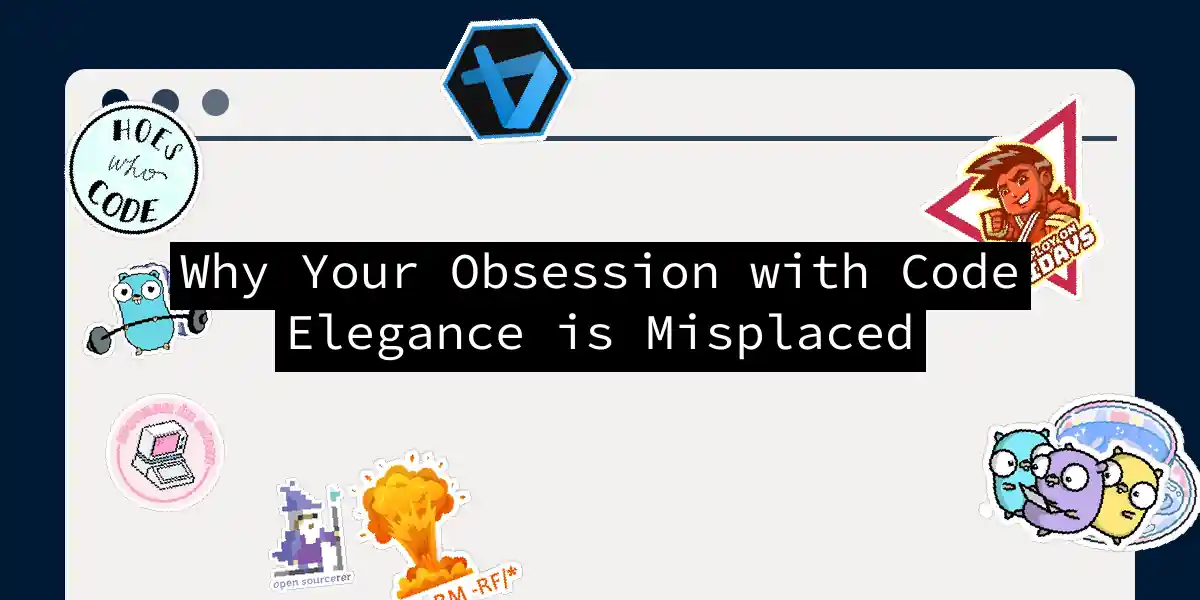The cult of code elegance has become the software industry’s version of a never-ending pursuit of the perfect Instagrammable dish. Developers polish their code until it sparkles, only to realize it’s rarely served. Let’s break this cycle.
The Elegance Trap: How Chasing Beauty Becomes Busywork
We’ve all fallen for it – rewriting a function into a symphony of decorators and facades, only to realize the original solution worked just fine. Ayende’s controversial approach where he stripped away dependency injection and repositories proves elegance often masks unnecessary complexity. Like the proverbial sports car for grocery runs, your intricate architecture might impress at conferences but fails to deliver in the real world.
When Abstractions Attack
Consider this classic case of premature optimization:
# Before: Simple but supposedly "ugly"
items = []
for item in input_data:
if item["status"] == "active":
items.append(item)
print(items)
# After: Elegance-driven redesign
class ItemFilter:
def __init__(self, criteria):
self.criteria = criteria
def filter(self, items):
return [item for item in items if self.criteria(item)]
class StatusBasedFilter(ItemFilter):
def __init__(self, status):
super().__init__(lambda x: x["status"] == status)
Outcome: 6x more lines for identical functionality. The real question isn’t “Is this elegant?” but “Does this solve the problem without creating new ones?” The “elegant” solution now requires:
- Maintenance: Ensuring all new statuses follow the pattern
- Cognitive Load: Developers must understand the abstraction hierarchy
- Test Debt: More code → More test cases required
Simplicity ≠ Stupidity: The Power of Emerging Design
Dan Goslen’s “three strikes rule” proposes that abstractions emerge naturally during refactoring – not from crystal ball programming. Imagine building a house brick-by-brick rather than trying to paint the walls before laying the foundation.
The “Switch” Case
What’s “uglier” than a switch statement? A clever combination of polymorphism and enums that never gets used.
# Practical approach
def handle_status(status):
return {
"active": process_active,
"pending": process_pending,
"archived": process_archived
}[status]
This works. No inheritance hierarchies. No design patterns. Just code that works. Reserve elegance for when it’s truly needed – after multiple iterations demonstrate a pattern, not during initial implementation.
The Inconvenient Truth About Code Maintenance
Elegant code often requires:
- Mental Overhead: Understanding complex abstractions
- Documentation ROT: Comments become obsolete faster than code
- Tooling Debt: Frameworks/Patterns require additional dependencies
The true measure of code quality isn’t its beauty but how quickly developers can:
When Elegance Matters – And When It Doesn’t
There are scenarios where code elegance makes sense:
| Case | Elegance Appropriate | Example |
|---|---|---|
| Framework/Library | Yes | React/Pandas |
| Public API | Yes | RESTful service endpoints |
| High-Frequency Code | Yes | Game engines/Trading platforms |
But For Most Apps:
Your internal billing system doesn’t need to be Picasso. It needs to calculate invoices correctly, handle edge cases, and run before payroll day.
The Alternative: Shipping-Focused Development
Try this approach when writing code:
- Solve First: Write the simplest possible solution
- Ship: Get feedback before optimizing
- Refactor: Only when needed, not when imagined
Example Workflow - Skimpy code → solves the problem
- Users report edge cases → handle them
- After 3-4 implementations → Extract common pattern
This reduces unnecessary abstractions and keeps development momentum.
Conclusion: Embrace the Ugly
The pursuit of code elegance often prioritizes form over function. Remember:
- Code is a tool, not art
- Maintenance costs matter more than initial impressiveness
- “Write code that’s easy to throw away”
Next time you feel the urge to redesign – ask: “Will this change make our software ship faster?” If not, perhaps it’s time to let that elegance obsession take a backseat. After all, as the saying goes in the trenches: “You can’t ride a unicorn if it never leaves the drawing board.”
